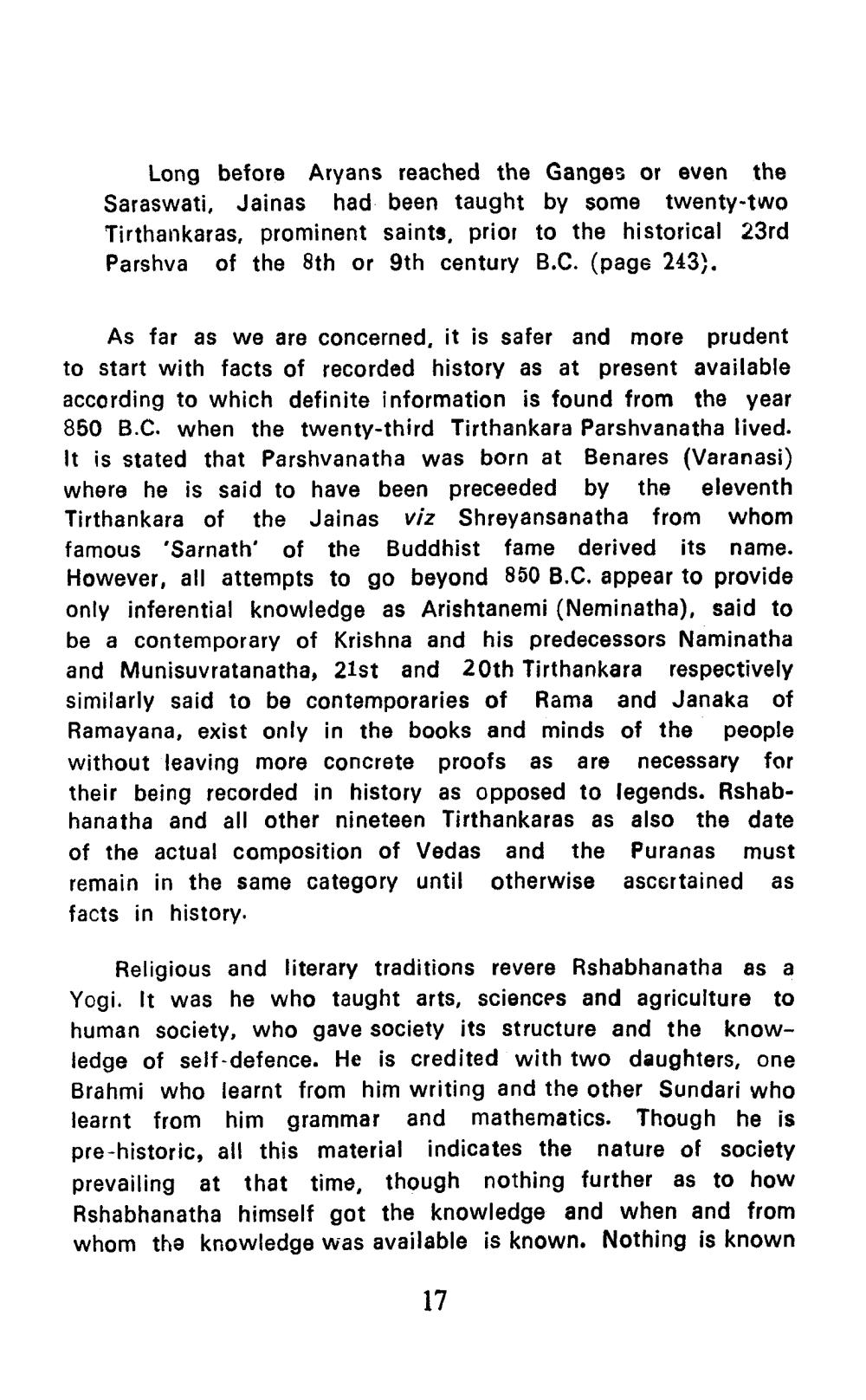________________
Long before Aryans reached the Ganges or even the Saraswati, Jainas had been taught by some twenty-two Tirthankaras, prominent saints, prior to the historical 23rd Parshva of the 8th or 9th century B.C. (page 243).
As far as we are concerned, it is safer and more prudent to start with facts of recorded history as at present available according to which definite information is found from the year 850 B.C. when the twenty-third Tirthankara Parshvanatha lived. It is stated that Parshvanatha was born at Benares (Varanasi) where he is said to have been preceeded by the eleventh Tirthankara of the Jainas viz Shreyansanatha from whom famous 'Sarnath' of the Buddhist fame derived its name. However, all attempts to go beyond 850 B.C. appear to provide only inferential knowledge as Arishtanemi (Neminatha), said to be a contemporary of Krishna and his predecessors Naminatha and Munisuvratanatha, 21st and 20th Tirthankara respectively similarly said to be contemporaries of Rama and Janaka of Ramayana, exist only in the books and minds of the people without leaving more concrete proofs as are necessary for their being recorded in history as opposed to legends. Rshabhanatha and all other nineteen Tirthankaras as also the date of the actual composition of Vedas and the Puranas must remain in the same category until otherwise ascertained as facts in history.
Religious and literary traditions revere Rshabhanatha as a Yogi. It was he who taught arts, sciences and agriculture to human society, who gave society its structure and the knowledge of self-defence. He is credited with two daughters, one Brahmi who learnt from him writing and the other Sundari who learnt from him grammar and mathematics. Though he is pre-historic, all this material indicates the nature of society prevailing at that time, though nothing further as to how Rshabhanatha himself got the knowledge and when and from whom the knowledge was available is known. Nothing is known




